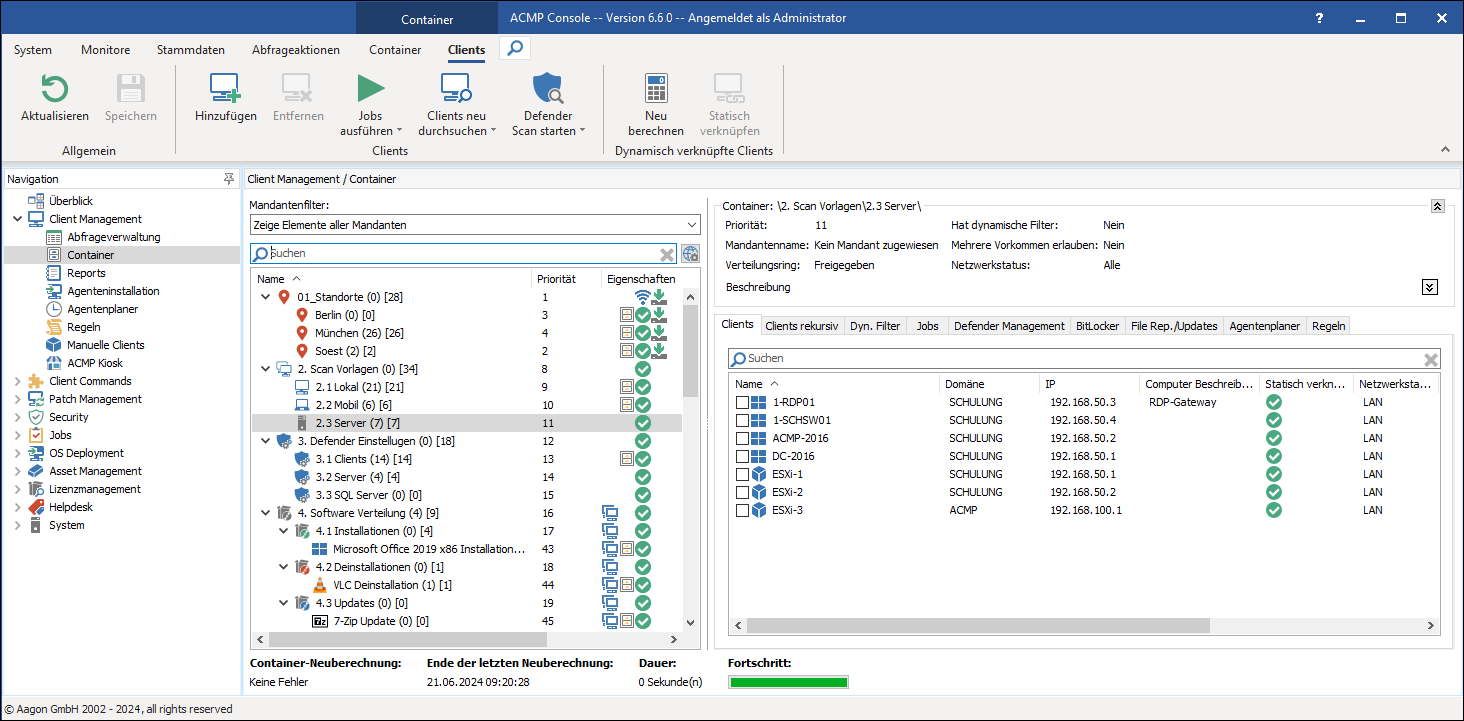Container
General
Containers are used to categorise Clients into groups. This allows you to map your corporate structure, for example, or differentiate between mobile and local Clients. You can assign Jobs, Rules, Updates and Client Commands to each grouping of Clients, providing flexible, dynamic support for each Container. Clients can be assigned either statically or dynamically. Assignments are made using pre-defined filters that allow individual settings for each Container.

Container view
Containers also offer continuing features that enable targeted control of the Clients they contain. Firstly, Containers can be sorted according to their priorities. This allows you to influence and control the order in which the different Jobs, Client Commands, Updates and Rules are processed. Secondly, you can use the network status to delay or prevent execution by assigning the Clients to different groupings.
Properties of the Container
Containers can have different properties:
| Property | Description |
| The Container supports multiple ocurrences of Clients | |
| The Container has dynamic filters | |
| Displays the current network state of the Container | |
| Provides information about the type of File Repository inheritance | |
| A Tenant is assigned to these Containers. You can see which Tenant is assigned here in the Tenant name column. Global Containers affect all Clients. Containers that are assigned to a specific Tenant also only affect clients from this Tenant. | |
| A Defender Configuration Profile is assigned to this Container. | |
| A BitLocker Configuration Profile is assigned to this Container | |
| The Containers are assigned to a Test Ring for Windows Update Management and/or Managed Software (either Test Ring 1 or Test Ring 2) |


